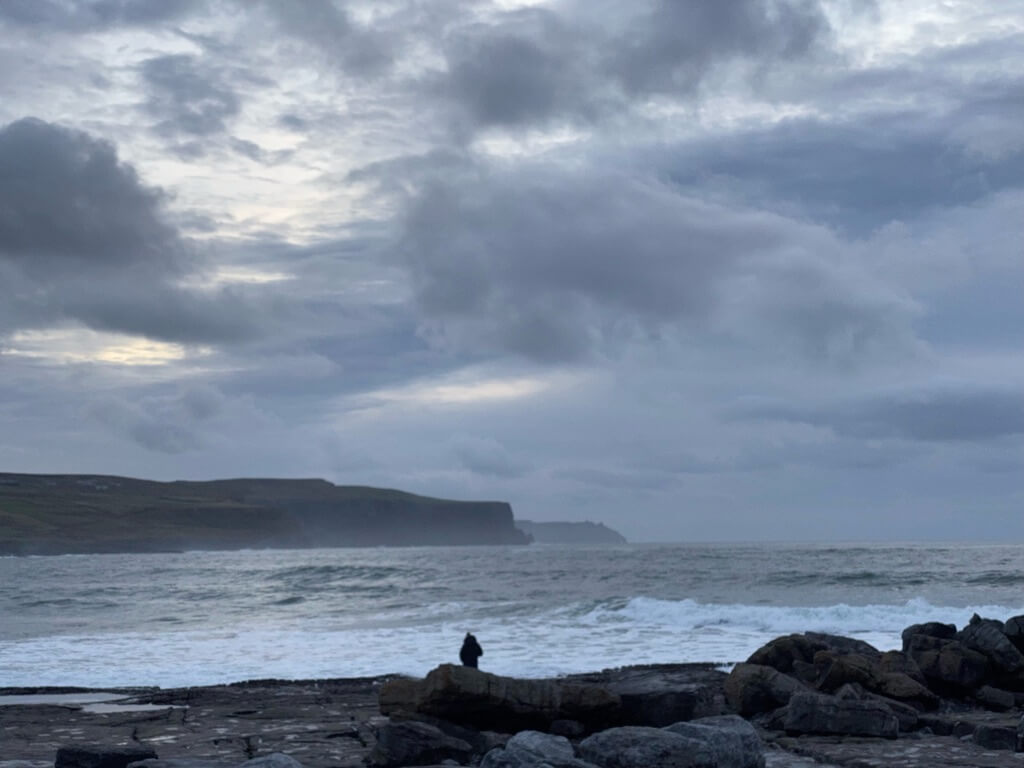Along Ireland’s western coast, the Wild Atlantic Way stretches for 2,500 kilometers, offering travelers an unforgettable journey through some of the world’s most stunning landscapes. While popular stops like the Cliffs of Moher and Ring of Kerry draw millions of visitors annually, there are countless hidden treasures waiting to be discovered along this magnificent route. Here are some of the lesser-known spots that deserve a place on your itinerary.
Mullaghmore Peninsula, County Sligo
Often overshadowed by its more famous neighbors, Mullaghmore Peninsula is a dramatic coastal paradise that remains relatively undiscovered. The historic Classiebawn Castle stands sentinel over the landscape, while world-class waves attract intrepid surfers during winter months. What many visitors miss is the hidden Butterfish Cave, accessible only during low tide, where the rocks glisten with mineral deposits that create a magical atmosphere.
The Secret Beaches of Donegal
While Bundoran draws the crowds, savvy travelers head to Murder Hole Beach near Downings. Despite its ominous name, this hidden cove offers one of Ireland’s most picturesque settings. Accessible only by foot through private farmland (remember to ask permission), the beach rewards visitors with golden sands, dramatic cliffs, and natural arches that frame the wild Atlantic perfectly. During summer evenings, the setting sun creates a spectacular light show on the cliff faces.
Clare Island’s Forgotten Monastery
Off the coast of Mayo, Clare Island is known for its connection to the pirate queen Grace O’Malley, but few visitors venture to its 12th-century Cistercian abbey. The monastery contains some of Ireland’s rarest medieval wall paintings, depicting dragons, knights, and mysterious religious symbols. The island’s population of just 160 people means you’ll often have these historical treasures all to yourself.
The Lost Valley, County Mayo
Near Louisburgh lies one of Ireland’s most poignant historical sites. The Lost Valley is a time capsule of pre-famine Ireland, featuring abandoned stone cottages and ancient field systems that have remained untouched since the Great Hunger. Local farmer Gerard Bourke offers guided tours, sharing stories passed down through generations about the families who once called this valley home. The spectacular views of Mweelrea Mountain and the Atlantic provide a stunning backdrop to this moving historical experience.
Sliabh Liag’s Secret Pilgrimage Path
While the Sliabh Liag cliffs in Donegal are increasingly popular, few visitors know about the ancient pilgrimage path known as the One Man’s Pass. This hidden trail, used by monks centuries ago, offers heart-stopping views and a genuine sense of adventure. Even fewer people visit the hidden holy well below the cliffs, where locals still leave offerings following age-old traditions.
The Beara Peninsula’s Copper Mines
The Beara Peninsula, straddling Cork and Kerry, holds the fascinating remains of Ireland’s largest copper mining industry. The abandoned mines near Allihies tell a story of industrial heritage often overlooked by visitors. The transformed mining museum occupies an old Methodist church, but the real treasures lie along the mountainside where careful explorers can find old mining shafts and spectacular views across Ballydonegan Bay.
Inishbofin’s Hidden Beaches
Off the Connemara coast, Inishbofin Island harbors several secret beaches that rarely see footprints. East End Bay, with its crystal-clear waters and white sand, could easily be mistaken for a Caribbean shore on a sunny day. The beach’s tidal pools host a variety of marine life, making it a paradise for naturalists and photographers alike.
The Skellig Ring’s Forgotten Fort
While the Skellig Islands have gained fame thanks to Star Wars, the nearby Skellig Ring holds its own ancient secrets. The rarely visited Cahergall Stone Fort offers a glimpse into Iron Age Ireland without the crowds of similar sites. On a clear day, the views extend to the Skellig Islands, and the fort’s perfect circular structure demonstrates the remarkable engineering skills of our ancestors.
Final Thoughts
These hidden gems represent just a fraction of the Wild Atlantic Way’s lesser-known treasures. What makes them special isn’t just their beauty or historical significance, but the sense of discovery that comes with visiting places that lie off the beaten path. They offer a chance to experience Ireland’s wild western coast in its most authentic form, away from the tour buses and selfie sticks.
Remember that many of these locations require some extra effort to reach, and some are weather-dependent or accessible only during certain seasons. Always check local conditions and tide times where relevant, and respect both private property and the natural environment. These precious places have remained hidden gems precisely because visitors have treated them with care and respect.
The next time you plan a journey along the Wild Atlantic Way, consider venturing beyond the familiar attractions. These hidden treasures offer not just beautiful photos for your collection, but the kind of authentic experiences that make travel truly meaningful.


